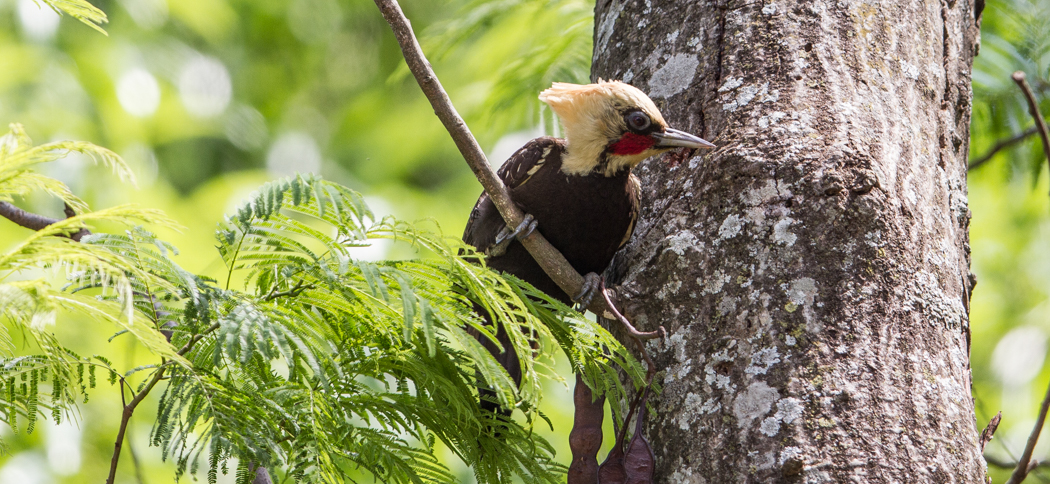
Strange Tails
We're delighted to have a strong population of strange-tailed tyrants at the reserve. So much so that we've adopted these beautiful and endangered birds as the symbol of the Trust
The growing diversity of the animals of Reserva Don Luis is a fresh source of delight every time we return. We don't play favourites, but it's impossible not to engage more with some of our more conspicuous guests. One of these is the strange-tailed tyrant. The male is stoic in his tolerance of one of nature's strangest - and it would seem least practical - adaptations. He's willing to suffer to be beautiful, and somehow manages to fly with tail feathers that were surely designed for a bird three times his size.
We love his perseverance; his resolution to succeed against challenge, and his ability to prove that anything is possible. He's appearing in growing numbers on the Reserva Do Luis, and his success has become an allegory for, and a symbol of, our own.
When we started the process of updating and redesigning our website, we wanted to adopt an image that symbolised our aims and our challenges. This brave little flycatcher, with his indomitable character, was the perfect choice.
The logo is a stylised profile of a male tyrant, silhouetted against the sunrise. We coloured the sun the blue of the Argentinian flag in honour of this country's beauty, its climate and the breathtaking span of magnificent animals that it nurtures.

Bat Research
Our bat team is conducting bat research both in the Ibera Marshes and in other provinces. We are especially concentrating on Misiones at the moment where we find the largest bat in Argentina, Chrotopterus auriitus and Myotis ruber, two species that we are researching.

Pale-crested Woodpecker
Celeus lugubris
We first saw this beautiful woodpecker in the woods called Monte Grande in Sept 2014. It stayed around for about a week and then we did not see it again until about the same time this year.
The male has a predominantly dark brown back with pale flecks. The rump is pale yellow and the tail feathers are black with chestnut coverts. Underparts are dark brown. The face is black with a large red malar and brown lores, and the majority of its head is covered in a straw coloured crest with a peak. It is medium sized at about 23cm.
Eyes are a chestnut brown surrounded by a bluish eye-ring.
The female is similar but lacks the large red malar and instead has brownish cheeks.

